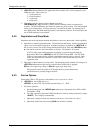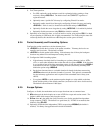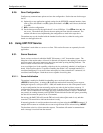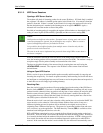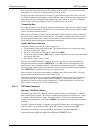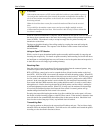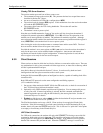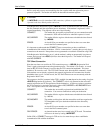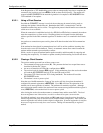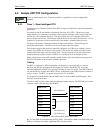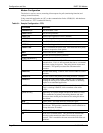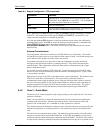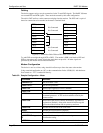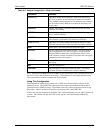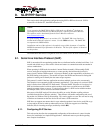
Configuration and Use DART 300 Modem
Page 72 2110212 Rev 1.0
If the Registration or TCP handshaking process takes an unexpectedly long time to complete the
connection, the local host can issue <ESC> (0x1B) to abort the dial process. The modem will
respond with NO CARRIER if the network registration is incomplete or NO ANSWER if the
TCP handshake is incomplete.
8.3.2.1. Using a Client Session
Provided the CONNECT message is received, the modem may be treated as being ready to
exchange data packets with the network. Remember that UDP is “connectionless” and the
destination terminal may not be on-line. The application protocol should handle cases where the
called server is not available.
When the connection is established actively (by a D (Dial) or O (On-line) command), the modem
treats the connection as a client session. Incoming packets are accepted from the destination
address specified in the Dial command regardless of whether or not it is contained in the Friends
List.
Any packets or connection requests arriving from an IP other than that in the Dial command are
ignored.
If the modem has been placed in command state but is still in on-line condition, incoming data
from the active server will be buffered. There is an automatic remote flow control between the
modem and the network to prevent buffer overflow.
While a session is open, the modem handles packet assembly and disassembly for outgoing and
incoming data respectively. For details on packet assembly and forwarding see Section 6.6 above.
8.3.2.2. Closing a Client Session
The session remains open until one of these events occur:
• The command to hang-up the session (H). This presumes the host has escaped data state as
described in Section 6.6.3 above.
• An on-to-off transition of DTR with a configuration of &D2.
• The session inactivity timeout (S30) expires. If this mechanism closes the session the modem
will send the NO CARRIER result in TCP or the OK result in UDP.
• The remote TCP client issues the TCP closing handshake. The modem will send the
NO CARRIER result.
• The modem is reset or power-cycled.
Note that use of the H command to “hang-up” the session will also de-register the modem if
configured for manual registration (+WS173=0). Use of H1 will force de-registration of the
modem even if auto-registration is enabled. The modem will remain de-registered. Although
auto-registration remains enabled, the modem will not resume auto-registration until the register is
reset (+WS173=1) or the modem itself is reset or power cycled.
After closing the session, the modem returns to command state and de-asserts DCD. The local
host can originate a new client session, or wait for a client call to open a server session.
Provided the modem is set to auto-register and H1 is not used to close the session, the modem
remains registered and ready for the next session without further configuration. Auto-answer and
network registration will remain in their original configuration. If manual registration is used, the
host must re-register to be ready for a server session. Dialing will automatically re-register if
needed.



